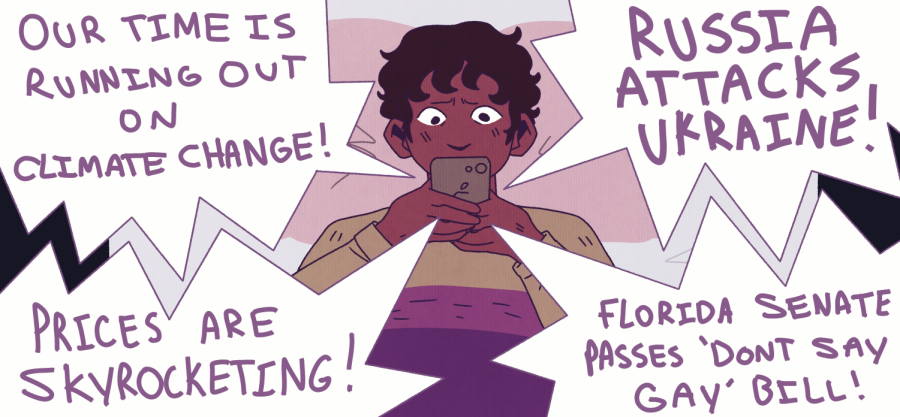Gen Z copes with major events via memes
Mar 19, 2022
As with countless other major global events, young people have taken to social media in the wake of the Russian invasion of Ukraine to spread information, resources and even memes about the situation.
The way that people have been using social media ranges from reposting Instagram stories about donating to hospitals to spreading TikToks posted by soldiers on the ground in Ukraine.
Dr. Brooklyne Gipson, an assistant professor of communication at the University, explained why people are often quick to turn to social media in times like this.
“A lot of us are using social media to learn, to get educated, but we’re also mining social media for memes that we can share to kind of signify that we’re on the right side of the fight,” Gipson said.
Social media can be a positive force in situations like these where people can connect, educate themselves and share resources.
Get The Daily Illini in your inbox!
“You can find research outlets and community-oriented people who are having these nuanced conversations that enhance what we’re getting from other places,” Gipson said.
People who may not be watching traditional news outlets are gaining access to ways to support Ukrainian people.
But there are also dangers to social media use, because people often believe what they see on social media and form opinions based on what they see.
“In a socially-mediated world, we’re not realizing that we’re all following each other’s lead in these conversations,” Gipson said. “In reality, the conversation is so nuanced. It can’t be reduced to a flag in support of Ukraine, it can’t be reduced to a joke about Putin.”
Dr. Rachel Magee, an assistant professor in the School of Information Science, studies the way teens engage with social media, including through forms of activism and making memes.
“I think there’s an idea or a sense that there’s a community you’re belonging to when you share these jokes,” Magee said.
The constant influx of information, especially memes, can have adverse effects on the groups that are experiencing the event that people are making light of. This is exacerbated when the majority of content is coming from people outside of the affected group.
Gipson warns of this concept.
“Memes can be very objectifying sometimes,” Gipson said. “They can turn real human subjects into objects of discourse.”
She recognizes, though, that memes are not always created out of malice.
“Some of those memes are coping mechanisms,” Gipson said. “When we see people making jokes about the war in the U.S., we’re so far removed from it. It allows some of us to keep a psychic distance.”
Social media not only functions as a way for teens to share their lives with each other, but it lets them engage with major news and attempt to make a difference with issues they care about.
“When we think about a big event like Ukraine, we can see more of what’s happening because more people are able to share information, more people are able to post and we have a variety of sources,” Magee said.
One of the primary concerns with the way that people interact with social media comes with the fear of spreading misinformation. With the sheer amount of content, it can be difficult for people to differentiate between truth and falsehood.
“If something you see on the internet is super emotionally provocative, that’s something you should take a beat on because a lot of this information is created for virality,” Gipson said.
Even with the dangers, they both acknowledge the positive potential that social media holds.
“We need to let people have opportunities for expression and engagement with the community,” Magee said. “But we also need to encourage them to think a little bit about the social and human elements of what they’re doing.”






